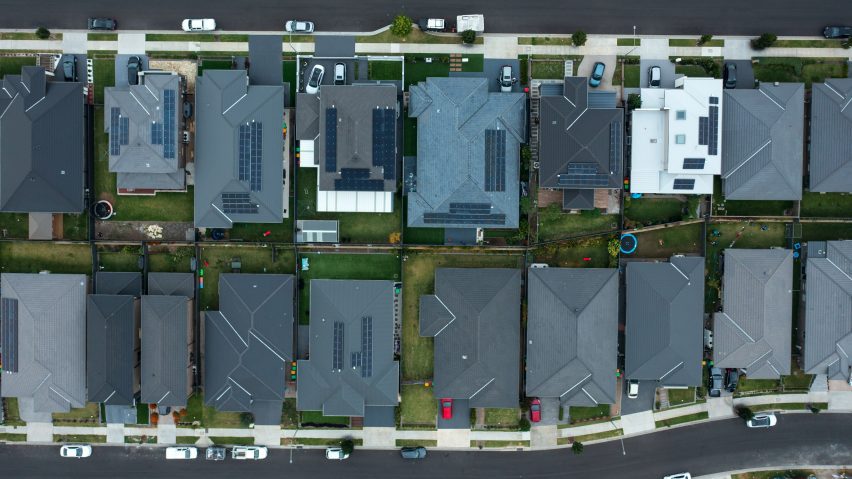Dark roofs will be banned and backyards expanded for all new houses built in Sydney's emerging Wilton suburb, as part of planning controls that are being introduced to help lower temperatures in the city.
Under plans set out by the New South Wales government, the slate grey roofing typical of much Australian residential construction must be abandoned in favour of lighter, more reflective alternatives that are able to passively cool a building.
The Wilton Development Control Plan for the suburb in western Sydney will also require residential lots to be large enough to accommodate a tree in the garden.
Together with the cool roofs, the hope is that this will help to combat the urban heat island effect, which sees cities experience higher temperatures than the surrounding area due to their dense, dark infrastructure, which absorbs light and re-emits it as heat.
"Western Sydney already experiences blistering temperatures of over 50 degrees in summer," planning and public spaces minister Rob Stokes told the Sydney Morning Herald.
"The need to adapt and mitigate urban heat isn't a future challenge – it's already with us."
Cool roofs could reduce heatwave temperatures
The news comes after the latest IPCC climate report found that average temperatures in Australia have already increased by 1.4 degrees Celcius since the industrial revolution due to manmade climate change.
This means the country is warming faster than global average temperatures, bringing it close to the critical 1.5-degree threshold set out in the Paris Climate Agreement.
Due to the urban heat island effect, this is felt even more acutely in cities like Sydney. Wilton and other areas in the west of the city are already seeing temperatures of above 50 degrees Celcius in summer, leading experts to predict that they could become unliveable in a matter of decades.
More than 9,000 homes planned for Wilton
In a bid to mitigate this, the Wilton Development Control Plan hopes to provide more than 9,000 climate-resilient homes in the area over the coming years, none of which will be allowed to have dark roofs as these retain heat as well as increasing the need for air conditioning and associated carbon emissions.
"The Covid-adjusted predictions tell us that until 2030, we're going to settle another 400,000 people in the area," Sebastian Pfautsch, associate professor of urban ecosystem science at Western Sydney University, told ABC Radio Sydney.
"If we do that with black roofs, we're just building an oven for all these people. We have to move away from it."
Instead, the roofs will be painted in reflective paint, which Pfautsch says can lower a building's surface temperature by up to 40 degrees.
Applied at scale, studies have shown that cool roofs can reduce the intensity of the urban heat island effect by 23 per cent and lower maximum temperatures during a heatwave by two degrees Celsius or more.
This can be achieved through simple white paint, which naturally absorbs less heat than darker materials and has been used in initiatives such as New York's CoolRoofs programme and Ahmedabad's Heat Action Plan for more than a decade.
Research initiatives have also spawned more advanced technologies including a fluoropolymer paint developed by architecture practice UNStudio and a barium-based formulation by Purdue University, which is dubbed "the whitest paint on record" and capable of reflecting 98 per cent of sunlight.
Cities leading the charge in climate change fight
To amplify the cooling effect of the roofs, the Wilton Development Control Plan also mandates that residential lots of 15 by 18 metres need to accommodate a mature tree of at least eight metres in both their front and backyard.
This will help to create a so-called green corridor, combatting the urban heat island effect by improving ventilation as well as absorbing carbon dioxide from the atmosphere and improving local biodiversity.
Colombia's second-largest city of Medellin employed a similar strategy and was able to reduce average temperatures in the area by two degrees Celcius since 2016.
Both initiatives illustrate how cities can often be more agile and do more to address climate change than national governments, as Hélène Chartier of C40 Cities argued in an interview with Dezeen.
"Cities have been really leaders, especially when the nations were stuck with Trump," said Chartier, who is C40 Cities' head of zero-carbon development.
"Sometimes urban areas are more progressive so they feel that they have more operational capacity. They have more support from their residents to accelerate the transition and help nations to go in the right direction."

